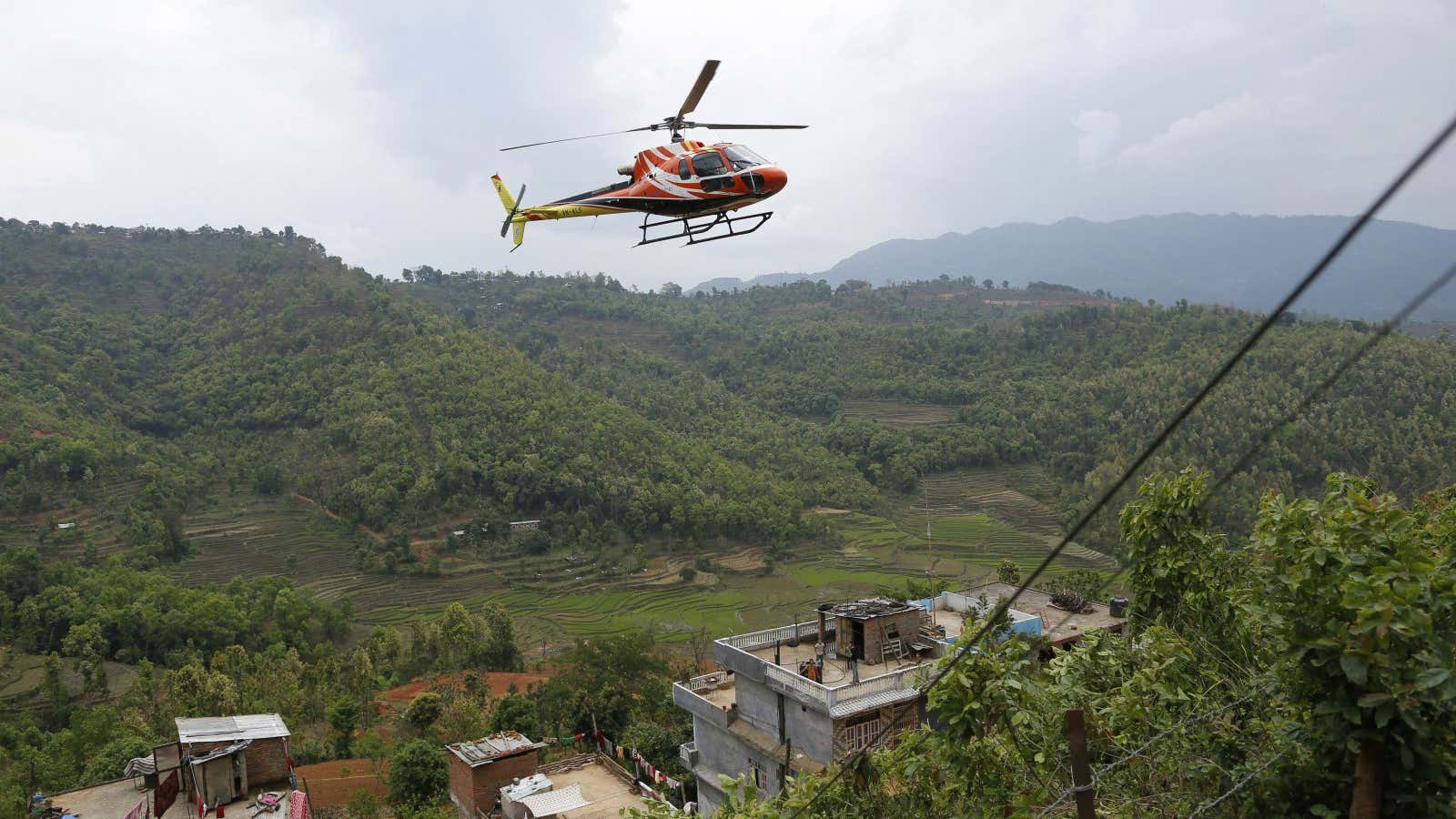In earthquake-ravaged Nepal, the international aid organization Medecins Sans Frontieres (MSF), or Doctors Without Borders, has been shuttling workers and supplies on helicopters to and from remote villages in need. MSF, like all non-governmental groups, charters private helicopters for these missions—sometimes only for several hours in a day, just enough time to fly from Kathmandu to a particular village and back.
Today (June 2) in Nepal, one of these helicopters crashed on its way back to Kathmandu. The New York Times reported that the pilot and his three passengers were all killed in the crash, which witnesses said occurred when the helicopter, flying at low altitude in a densely forested area, “hit a high-tension electrical wire.”
Early reports from the Associated Press and Agence France-Presse identify the three passengers as two Nepali men and one Dutch woman. All three worked for MSF.
Roughly six weeks have passed since Nepal was rocked by the 7.8-magnitude earthquake that killed more than 8,000 people and left countless others injured, homeless, and traumatized. It’s been less than three weeks since the 7.3-magnitude aftershock that shook up relief and rebuilding efforts. The US military helicopter crash near Charikot, Nepal, in May and the MSF helicopter crash, in the nearby Sindhupalchowk district, today underscore the continuing logistical difficulties rescue operations are facing.
